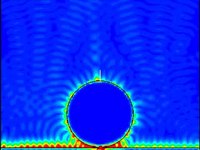
Photo from wikipedia
Spatially coupled (SC) low-density parity-check (LDPC) codes can achieve capacity approaching performance with low message recovery latency when using sliding window (SW) decoding. An SC-LDPC code constructed from a protograph… Click to show full abstract
Spatially coupled (SC) low-density parity-check (LDPC) codes can achieve capacity approaching performance with low message recovery latency when using sliding window (SW) decoding. An SC-LDPC code constructed from a protograph can be generated by first coupling a chain of block protographs and then lifting the coupled protograph using permutation matrices. In this paper, we introduce a systematic design to eliminate 4-cycles in a coupled protograph. Further using a quasi-cyclic (QC) lifting, we introduce a procedure for constructing QC-SC-LDPC codes of girth at least eight. This can be interpreted as a multi-stage graph lifting process that yields a greater flexibility in designing QC-SC-LDPC codes with a large girth than previous approaches. Simulation results show the design leads to improved decoding performance, particularly in the error floor, compared to random constructions. Finally, we determine the minimum coupling width required to eliminate 4-cycles in a coupled protograph.
Journal Title: IEEE Transactions on Communications
Year Published: 2020
Link to full text (if available)
Share on Social Media: Sign Up to like & get
recommendations!